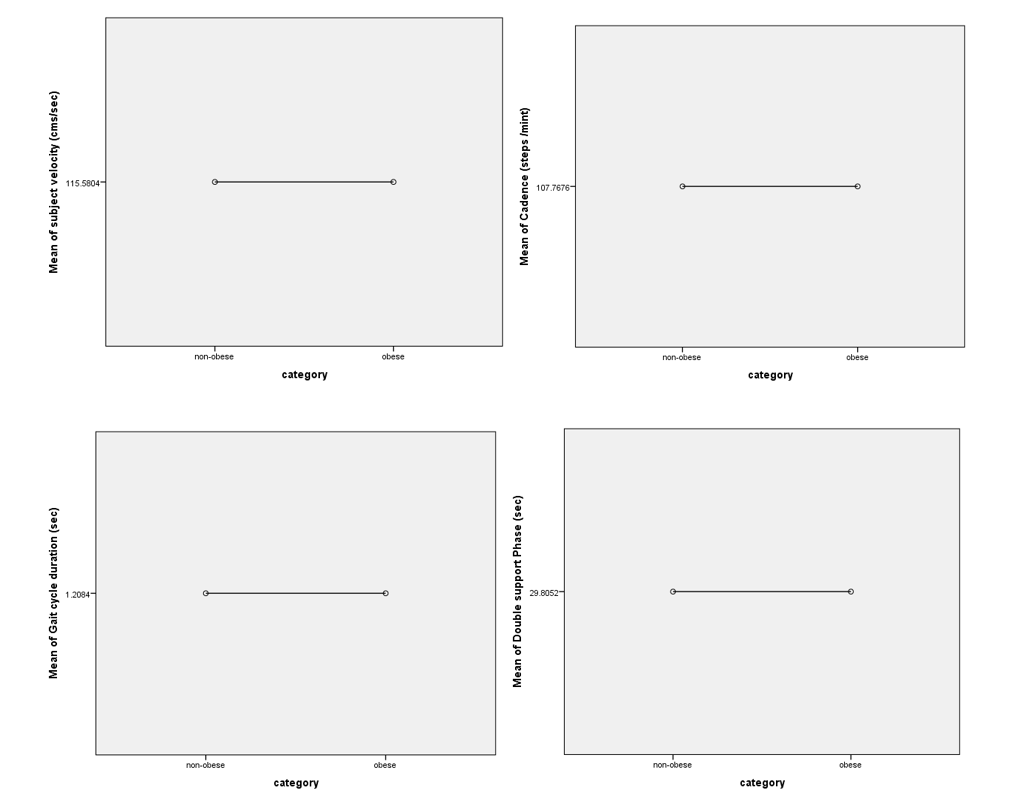Introduction
The World Health Organization (W.H.O) considers obesity in childhood as “one of the most serious public health challenges of the 21st century”. Obesity is defined as the excess of body fat. This definition may vary depending on the region however in Western countries such as U.S and in many European countries it is defined by body mass index (BMI). The BMI is calculated by dividing the weight over the square of height. If BMI is higher than 30 kg/m2 that indicates the obesity. Kopelman, P.G. (2000). Under that range is classified as overweight, average weight and underweight depending on values Walking is the most Activity in our daily life, and thus, increasing the daily number of steps in children and adolescents has received considerable attention for combating the obesity epidemic. Obesity is known to be associated with biomechanical alterations in the gait pattern, which may predispose children and adolescents with overweight or obesity (OW/OB) to short- and long-term musculoskeletal disorders (MSKD). From early childhood, OW/OB has been associated to the development of various MSKD (i.e., musculoskeletal pain, injuries and fractures) which may be extended to adulthood with notable consequences with regard to physical disability, quality of life and healthcare economic costs. Among other suggested explanations, increased joint loads, together with biomechanical alterations during loco-motor tasks, may be underlying the higher prevalence of MSKD in this population Kopelman, P.G. (2000).
Walking is an important skill and it makes a big difference in how one’s life turns out. Walking doesn’t come automatically, from a young age we struggle to crawl – and then we crawl everywhere we can. Next, we try pulling ourselves to stand at a table leg, at father’s leg, at the stair steps. We grunt and push and pull and fall and roll and bump, then try again and keep it up over and over again, and never quit in spite of face-falls and nose bruises – all because we want to be what we feel, persons come to be by walking (Hills, A.P., & Parker, A.W. 1991. Locomotion (walking and running) is the most common of human movements. It is one of the more difficult movement tasks that we learn, but once learned it becomes almost subconscious. The sole purpose of walking and running is to transport the body safely and efficiently across the ground (Winter, 1984). Gait is very different
between individuals and also varies from step to step within an individual. Gait consists of a harmonious set of complex and cyclical movements of the body parts through a dynamic interaction of the internal and external forces Songhua Yan, et al (2014 ). A complete cycle of gait comprises two consecutive contacts of the same heel with the support surface, and the time interval between these two contacts is called the length of the gait cycle.
The objective of the present study was to find the difference in walking between various temporal parameters of Obese and non obese subjects
Methodology
A total 100 female children (50 obese & 50 non-obese) whose age ranges from 12-14 years were selected for the present study. After studying literatures related to the study and consultation with experts, following variables were selected for the present study.
Variable selected for present study temporal Parameters
- Cadence (steps /mint)
- subject velocity (cms/sec)
- Gait cycle duration (sec)
- Double support Phase (sec)
These are time dependent measurements and were measured in the following way:
Cadence Measurement: It is measured as the number of steps per unit time, usually expressed as steps/minute as an individual walks or runs. The time duration of five steps taken by subject was recorded (1.640 sec) and accordingly the number of steps in one minute or sixty seconds was calculated.
Subject Velocity: Velocity is the rate of change of position with respect to some frame of reference. It was calculated as the displacement over time. The subject’s centre of gravity was taken as a stationary point, its displacement was measured, and time recorded as subject moved from one point to other.
Gait Cycle Duration It is the period elapsed between the successive heel contacts of the same foot. It encompasses in it the two phases durations; stance phase duration and swing phase duration. It is measured in seconds.
Double support phase :


 ©
© 